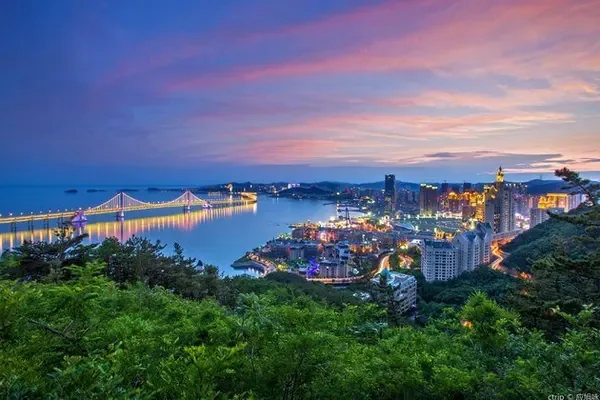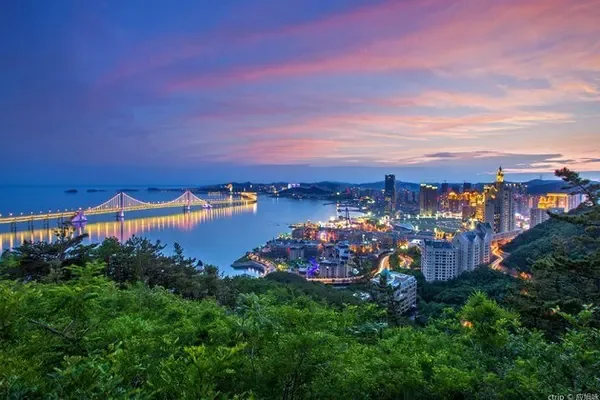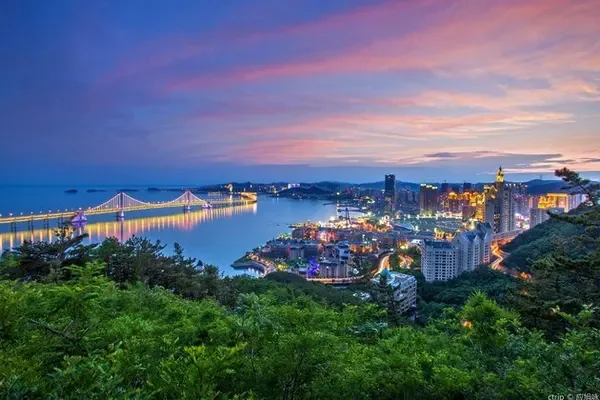What is Southern Xinjiang?
Five world-class peaks meet here
Ancient Greek, Indian, Persian and Chinese civilizations collide and merge here
The "roof of the world" Pamirs stand here
"The ancient capital of Central Asia", the essence of the Western Regions for two thousand years flows here
Why Southern Xinjiang?
An ancient city - Kashgar
Exploring the alleys, wandering the rivers and lakes, and rushing to the bazaar
A Heavenly Road - China-Pakistan Highway
Experience the four seasons, walk through the five lakes, and enjoy the eight scenic spots
Two Ancient Roads—Silu Tasha
Stepping on the border, crossing time and space, past and present
Three major nationalities - all kinds of customs
Uyghur, Kirgiz, Tajik
...
Stationed in the hinterland of southern Xinjiang
Cold comes and summer goes, spring goes and autumn comes
We visited the mountains, rivers, lakes and seas of the Pamirs
The perfect wild camera position for photography that has stepped on every corner
Finally sorted out a
"The classic way to open Pamir in southern Xinjiang"
Day1: Live in Kashgar and enjoy the ancient charm of Uyghur
◎Authentic old teahouse, the rivers and lakes of Uyghur old people
△Sitting cross-legged on the kang covered with blankets, order a donut-shaped Nang, accompanied by an enamel pot and tea bowl filled with brick tea; this is the world of old Uighurs: there is tea, there are people, there are The story can hit the old days of Kashgar to the greatest extent.
◎Uyghur craftsmen, a century-old handicraft
△The artisans in the old city of Kashgar almost occupy half of the old city. Everyone relies on the skills handed down from their ancestors to show their talents and support their families by their unique skills. Visit all kinds of artists on the street and feel the exquisite craftsmanship of Uyghur.
◎The ancient mosque, the glory days of Muslims
△The mosque used to be the soul of the city. Stepping into the mosques scattered in the old city, the Id Kah Mosque, the place where Muslims "gather" in Xinjiang, and the "Masjid Mosque" between the corners of the streets and alleys, understand the spiritual sustenance of the Uyghurs.
◎Secret Qianmo Lane, the pulse and vitality of the old city
△Strolling in the alleys rarely seen by tourists, you can taste the essence of the ancient charm of the old city; you can walk through the cobweb-like alleys, and feel the illusion of traveling through time; you can walk through the big and small bazaars on the streets, and touch the vitality and vitality of the people in the old city.
◎Gaotai folk houses, a thousand-year-old independent cliff
△This is the epitome of ancient Kashgar. Every house is a family history of reproduction, growth, rise and fall, and continuation of the family. An "isolated island" standing on a high earth cliff.
◎Gaotai clay pottery, craftsmen who have finished
△This is a gathering place for craftsmen. It can be said that without pottery, there would be no Gaotai dwellings. Now Gaotai dwellings are facing demolition, some of them collapsed, there are very few people, and there are only a handful of pottery makers left.
◎International Grand Bazaar, Taobao in the Western Regions along the Ancient Silk Road
△ In Bazaar, thousands of Uyghurs from nearby counties will gather here to shop from all directions. This place is like the "offline Alibaba of the Western Regions", it is the first choice for tourists to buy specialty products, and it is also an important "field" to experience Uyghur folk life.
◎King’s Night Market, authentic Uyghur street food
△Southern Xinjiang is rich in melons and fruits, and the street food is not inferior, such as kebabs, grilled meat in a naan pit, grilled buns, breaded meat in naan, pilaf, ramen, oil tower, noodle soup, naan, sanzi, Ququ wonton, grilled Fish, lamb lungs, rice sausages, baked eggs... are enough to awaken the soul of a foodie.
Day2: Watching Mazar and visiting Bazaar, exploring Tianmen to reach the sky
◎Mazha, the tomb of the concubine Xiang, the legend of Uyghur family letters
△The green tomb where the soul of the concubine Xiang returned, the family tomb of Apak and Zhuo. The brick and tile decoration of the cemetery, the ups and downs of the concubine's return to her hometown, the legendary family story of Apak and Zhuo, the Uyghur tradition of worshiping Mazha...here is written a thick family history and a splendid national history.
◎Cow and sheep bazaar, red dust billowing ethnic background
△Melons and fruits are mixed with the smell of cattle, sheep and camels, and the barbecue is mixed with the smell of naan and dust; the old Uyghurs still wear mandarin jackets and robes, wearing flowered hats and leather boots that were popular a hundred years ago...there is the most down-to-earth market here with gourmet food.
◎Artush Tianmen, a magical workmanship with unique caves
△The natural stone arch hidden deep in the Tianshan Mountains is 457 meters high, the highest in the world, and can accommodate the entire Paris "Eiffel Tower". When you come here to explore, you can experience the feeling of being shaped like an ax and reaching the sky in one step.
Day3: Take the China-Pakistan Highway, experience the four seasons and enjoy the eight scenic spots in one day
◎Ancient Road Ladder: Gazi Canyon
△The blue-gray Gezi River calmly and powerfully cut through the 7,000-meter-high Gonggar Mountains, providing people with an opportunity to enter the depths of the Pamirs.
◎Pass pass: Subashi Daban
△ "Subash" means "watershed". Looking back, the road is like a silver-gray strip passing through it. There are both open and boundless grasslands and majestic and majestic snow peaks.
◎Danxia Flames: Oytak Red Mountain
△ Red clastic rocks with an area of nearly 100 square kilometers are distributed along the river. It is as bright as Danxia, and it looks like a flame, like "pork belly" falling from the sky.
◎Desert into Mountains: Bulunkou Baisha Mountain
△Baisha Mountain is born of sand—it is formed by the white sand at the bottom of the lake and the narrow pipe wind blowing. The silvery white sand debris is blown up with the wind day and night, and finally a sand mountain covered with silver sand is built.
◎Snowy peaks: Gonger Mountains
△The leaden-gray Hunmang Mountains rose from the ground, and snow-covered peaks began to appear frequently. Among them, the highest altitude is Gongger Peak, 7649 meters. It is connected with Gongger Jiubie Peak, 7530 meters above sea level.
◎Father of Glacier, Muztag
△Most half of the mountain is covered with square glaciers, shaped like a pyramid that holds the sky, and is one of the landmarks of Pamir. The snow cover on its peak is as thick as 100-200 meters, and there are 16 glaciers with a total area of 275 square kilometers.
◎Planed moraine, Baisha Lake
△The moraine lake formed by the planing and erosion of ancient glaciers has received the water vapor transported by the Muztag Glacier, and under the joint action of the canyon and the tuyere, it has formed a dynamic landscape painting.
◎Tears of Xuefeng, Karakule Lake
△This color-changing lake formed by glaciers is a mirror for Xuefeng to dress up. The lakes and mountains are unpredictable according to the weather, sometimes green and soft, sometimes dark brown and deep, sometimes silver gray, blue, orange...
◎Pastoral pasture, Taxkorgan River Valley
△In the depths of the Pamirs, where the Chinese Tajiks live: mountains on both sides, gentle and oily valleys, scattered cattle and sheep, idyllic homes, and occasional white herdsman yurts...
Day4: Marching to the China-Pakistan border, re-walking the ancient silk road
◎Border Ranch, Dabudar
△Upstream along the Taxkorgan River Valley, the summer is warm and windy, wild flowers are everywhere, and cattle and sheep shuttle. Spread a blanket of tablecloth, get drunk between mountains and rivers, and return to the nature of the fields.
◎The ancient silk road, tracing the traces of Xuanzang in the Wakhan Corridor
△The post stations and ancient roads full of vicissitudes and relics are filled with the persistence of the sages in pursuit of truth and wealth, and they also write the legendary epic of Tajik border guards.
◎Daban, the gate of the snowy country, overlooking Pakistan
△The terminus of the eastern section of the China-Pakistan Highway, the highest port in the world, and the location of the mysterious and legendary red national gate. Outside the country is Pakistan, and there are often friendly Pakistani border police who take the initiative to take a group photo. Be prepared to be surrounded by Pakistani railways.
Day5: Play Taxkorgan in depth, go to the mountains and go to the countryside to roam the city and the countryside
◎Aral Golden Grass Beach, the spiritual home of wandering shepherds
△This once carried the nomadic life of the Tajik people, gathering colors of warmth, enthusiasm and hope. On the plank road suspension bridge, between meadows and rivers, on the side of Xuefeng Mountain, with multiple perspectives and wild camera positions, walk into the Golden Grass Beach and enjoy its changeable and rich beauty.
◎Standing in the stone city, the ancient post on the Silk Road echoes for thousands of years
△Ancient post and city. Countless businessmen, monks, and explorers went west or east from here, and countless regimes prospered and fell here. Today, the site is seriously weathered, surrounded by towering snow peaks, winding grassy beaches and rivers, reflecting each other's splendor, echoing the thousand-year-old sound of the Silk Road.
◎Unique regional culture, a collection of folk customs
△Very distinctive Tajik costumes. Women generally wear exquisitely embroidered Kuleta hats. Newlyweds who have been married within one year will also dress up in daily life. They will add a row of small silver chains called "Slisla" to the brim of the hat, wear large earrings, and wear large earrings around their necks. Wind several jewelry necklaces...
◎Tajik wedding, full of ceremonies and blessings
△The wedding of a couple is a grand ceremony for the whole tribe, and the whole village will be immersed in the carnival atmosphere of the festival. The newlyweds will eat the meat, naan, yogurt or milk tea blessed by prayers and prayers together, expressing that they will live together and share joys and sorrows.
◎The eagle flute is played, and the eagle dance starts
△The Tajik people on the plateau are called eagles on the high mountain. They live in the cold snowfield, but they have a fiery heart. Slaughtering sheep to entertain guests and dancing eagles convey the sincere enthusiasm and folk customs of the Tajik people.
◎Horse racing and sheep: confrontation on horseback
△At the wedding ceremony, people on horseback scrambled to snatch a goat whose head and limbs were cut off, called "Dunback". The rider holds the whip in his mouth, grabs the saddle with one hand, and rushes like an arrow from the bow to fight for it. This is a game for the strong, and it is also a fierce battle.
◎Yak holding sheep: Xiaogong Bahar Festival welcomes spring
△ During the large-scale celebration ceremony, the Tajiks will hold a yak and sheep activity. Different from riding a horse and grabbing a sheep for speed, the traditional yak picks a sheep for courage. When the snow and dust rise in the sky and the eagle whistle blows, the Pamirs are also boiling.
◎Tahman Wetland: Nine bends and eighteen bends
△The local people call it the place where "the gods and flowers multiply". Countless ice and snow melt water gather here, rivers, lakes and meadows, with nine bends and eighteen bends. Being here, you may indulge in the mountains, rivers and countryside with its own filters on the plateau.
◎Sahuan Taheman Wetland, free between heaven and earth
△The breeze blows across the grassy beach, the cattle and sheep graze with their heads down, the white-headed snow-capped mountains in the distance, and the clouds slowly coming.
◎Secret country tree tunnel: the best background wall for taking photos
△Several hidden tree tunnels are scattered in the surrounding countryside, many of which are little known. Cattle and sheep pass by from time to time. In the evening, the setting sun casts shadows on the trees.
Day6: Walk through the Tasha Ancient Road and get in touch with the original Tajik
◎Scenery of lakes and mountains: Black Wolfberry Wild Duck Lake
△Blue Wild Duck Lake, named for the many wild ducks on the lake. Along the way grows the wild black wolfberry with the largest particle size known so far. In the face of this precious plateau tonic, you might as well try to pick and taste it.
◎Gaoxia out of Pinghu Lake: Xiabandi Water Conservancy Project
△The water area spans nearly 21 square kilometers, which is a blueprint drawn by modern water conservancy projects in Pamir more than ten years ago. It submerged the former Tajik villages and ancient tombs, connecting rough mountains and deep valleys.
◎Tasha Ancient Road: Xuanzang’s Return to the East
△The villages along the ancient road are all connected to the outside world by iron cable bridges across the river. Because the road is dangerous and far away, the people in the deep mountains here have not been disturbed too much by the outside world, and the folk customs are relatively primitive and pure.
◎Kiss ceremony: the traditional ancient meeting ceremony
△Tajik unique way of greeting. For thousands of years, Tajik people have to meet etiquette: according to age, gender, and seniority, there are different parts or ways of kissing.
◎Baking naan, an essential survival skill on the plateau
△In the harsh conditions of the Pamir Plateau, almost every woman in a ranch house can make bread. This is the Tajik way of life: three meals a day are inseparable from naan, and half a naan bread soaked in milk tea is a full meal.
◎Tajik village in the secret place of Kunlun, the warmth like a paradise
△The hidden ancient road country extends the original ethnic blood of the Tajik people. Apricot blossoms in spring and fruits in summer and autumn can not only appreciate the vast and peerless villages, but also feel the most simple folk customs and enthusiasm.
Day7: Revisit the China-Pakistan Highway and return to Kashgar
Written by | Miss Zebra
Photography | Mr Zebra
Welcome to add the WeChat public account "Zebra Walker";
Or check Mr. Zebra's WeChat Moments (WeChat ID: 553141191)
about Us
【Zebra companion】
Mr Zebra and Miss Zebra
A group of two people, traveling through the four seasons
Prefer exotic customs, travel all over Central Asia and South Asia
Obsessed with folk customs and humanities, traveling in the north-northwest all year round



